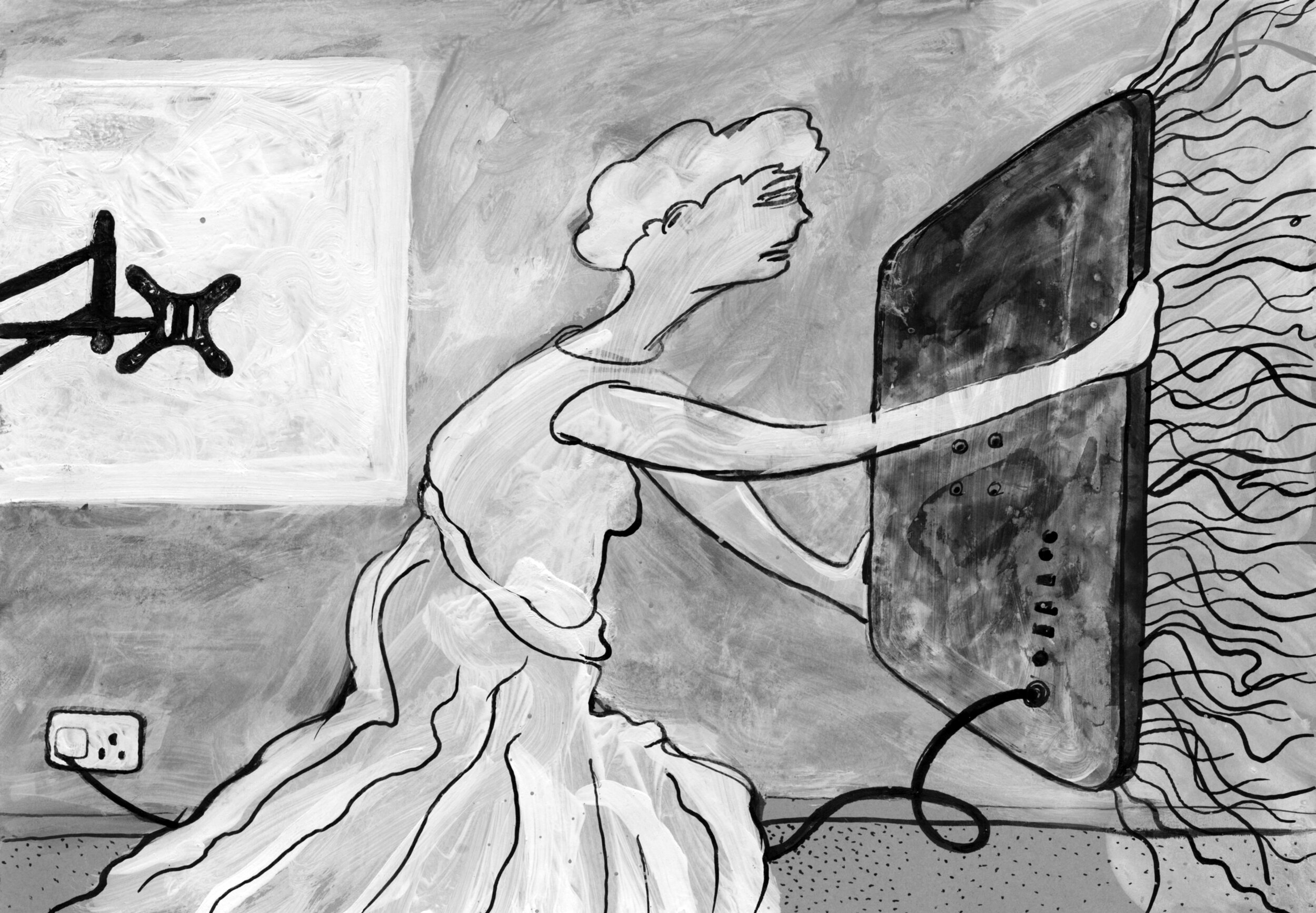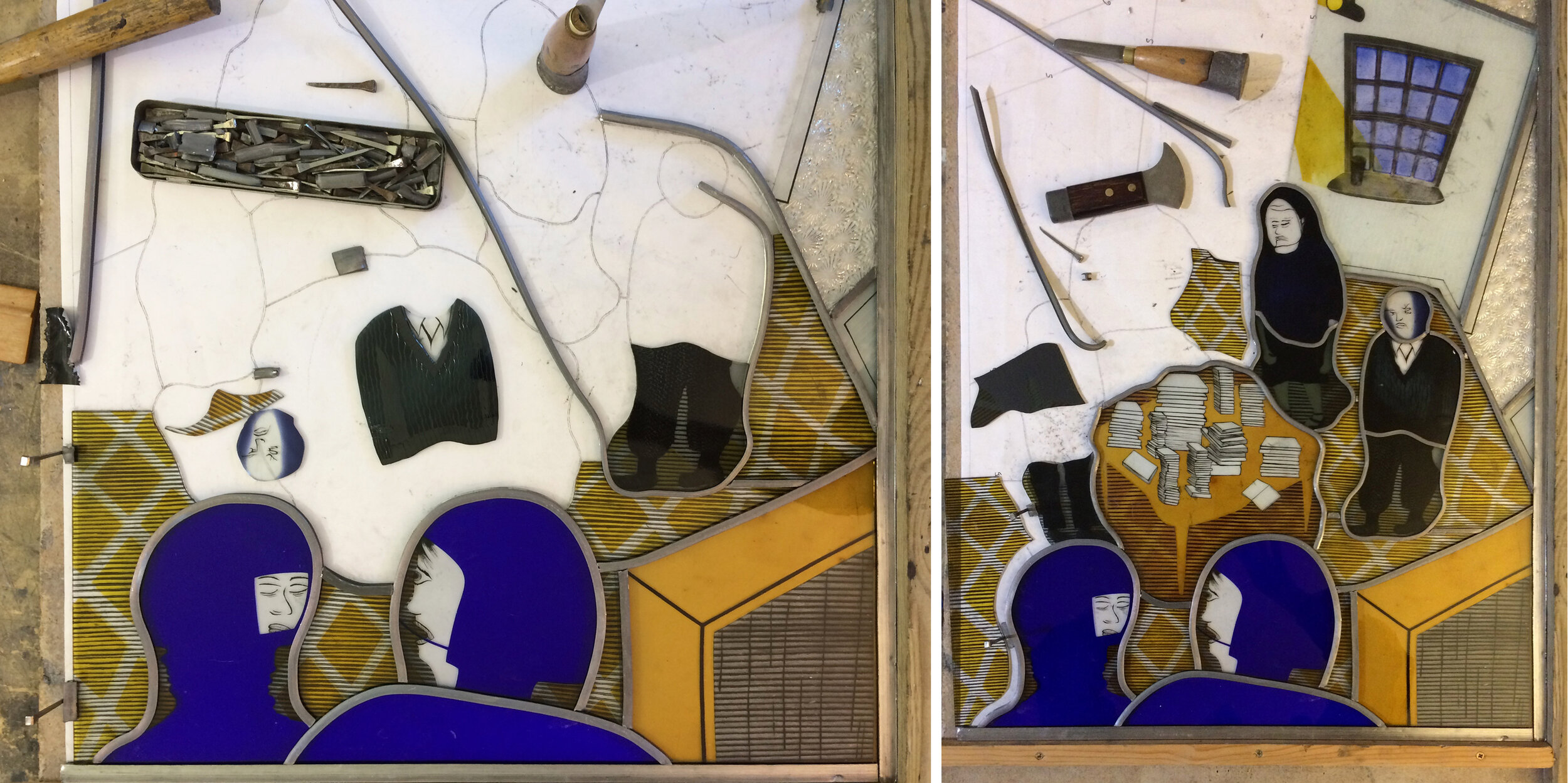Left, Ray Ward’s painting, egg tempera and indian ink on gesso. Right, my stained glass interpretation of Woman in an Opera Dress at a Prison Camp, 420 x 360 mm.
This is the latest in my series of so called collaborations with Ray, made as a request by one of his collectors who missed out on buying the original black and white painting (above left). Sometimes Ray’s characters are adapted from visual sources, like a snapshot, but this one comes from a story told in her memoirs by Evgenia Ginzburg who served an 18 year sentence in labour camps at the eastern edge of the Soviet Union. Here she met women who arrived at the camp in their tattered finery because they had been arrested while at the opera. This was a great choice of painting to interpret as it is covered in lines and textures, with the dress and her flesh that is visible through it seemingly the focus of the piece.
Although I trace directly from a photocopy of Ray’s work, I have to do the lines in a completely different way - too many black lines on coloured glass would look like a load of dirty scribbles. Instead for the dress I chose two shades of streaky pink flashed glass and sandblasted the colour off to make fine white lines. You can see in the photo of the dress detail above how deep I had to go to get to the white, creating a texture that looks pleated and scruffy, as I imagine the original dress was. I covered the background in fine sandblasted lines and smoky paintwork too, with the only bit of sgraffito scribble on the ground behind the figure. All this talk of detail makes me think I should concentrate less on the technique and more on the subject matter.
Choosing the glass, painted pieces on the lightbox.
Evgenia Ginzburg survived her ordeal in the gulag, as did my mother’s cousins. She met them for the first time when we went to visit the family in Gus-Khrulstany in the year 2000, a photograph (below) marks the happy occasion The two cousins are in the back row in the centre of the photo, I can see that I could have used either of their faces for the portrait of the woman. Next to them sits my mother Elizabeth (wearing glasses) with me in the right foreground.
In the 1990s Anastasia, the granddaughter of my mother’s cousin Natasha and therefore my second cousin once removed, brought the branch of the family that had stayed in Russia into contact with the branch of the family that had gone to England at the Revolution. She is in the centre of the photo above and on the left below with her parents and grandmother Natasha. We have a wealth of family stories, diaries and photographs from the pre revolutionary period, then a big gap except for one story from the late 1920s or 30s. My great aunt Lena travelled to Gus in an attempt to bring little orphaned Natasha back to England with her, but the grandfather wouldn’t let her go. As Natasha recounted the familiar story to us she said, ‘think how different my life would have been then.’






























